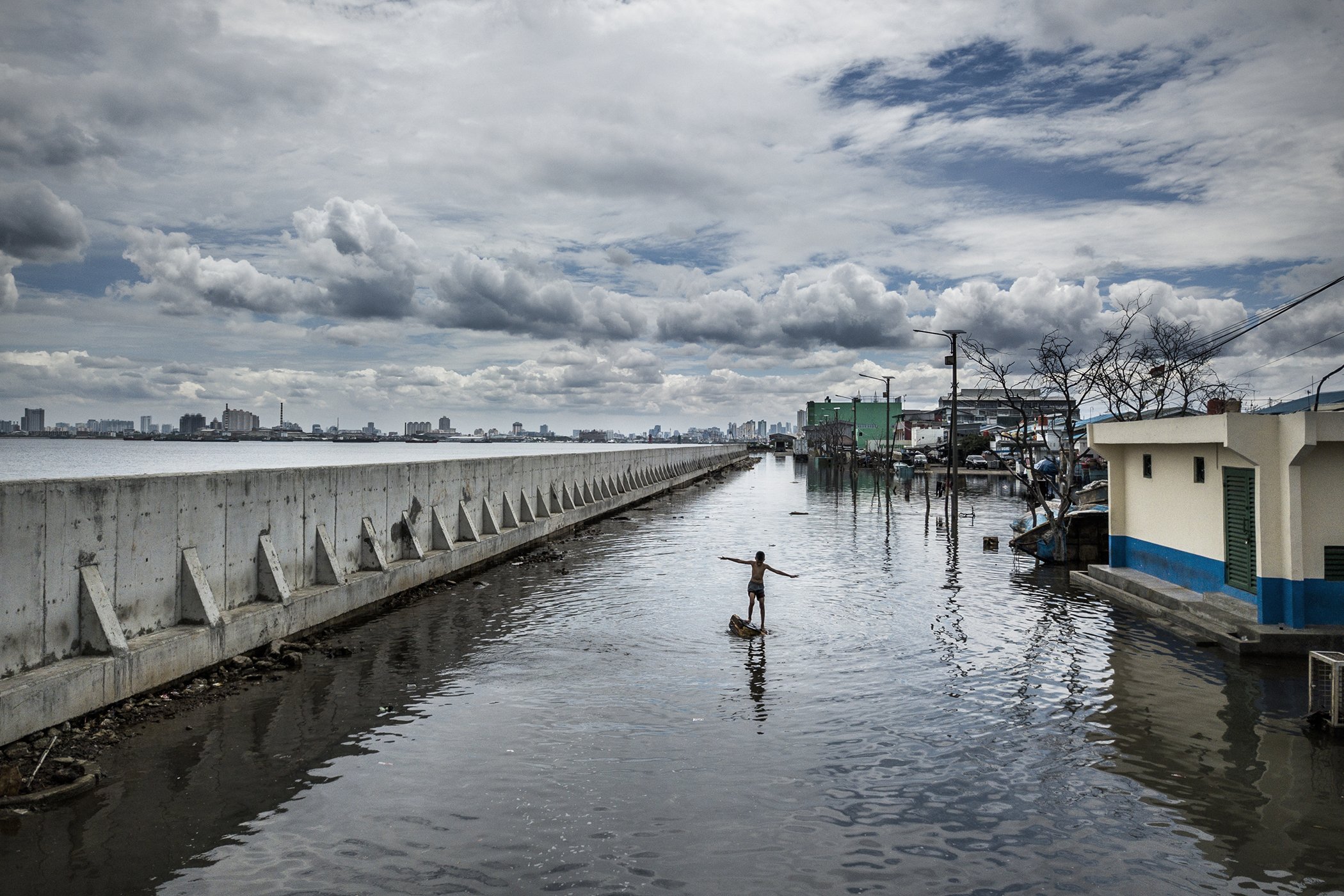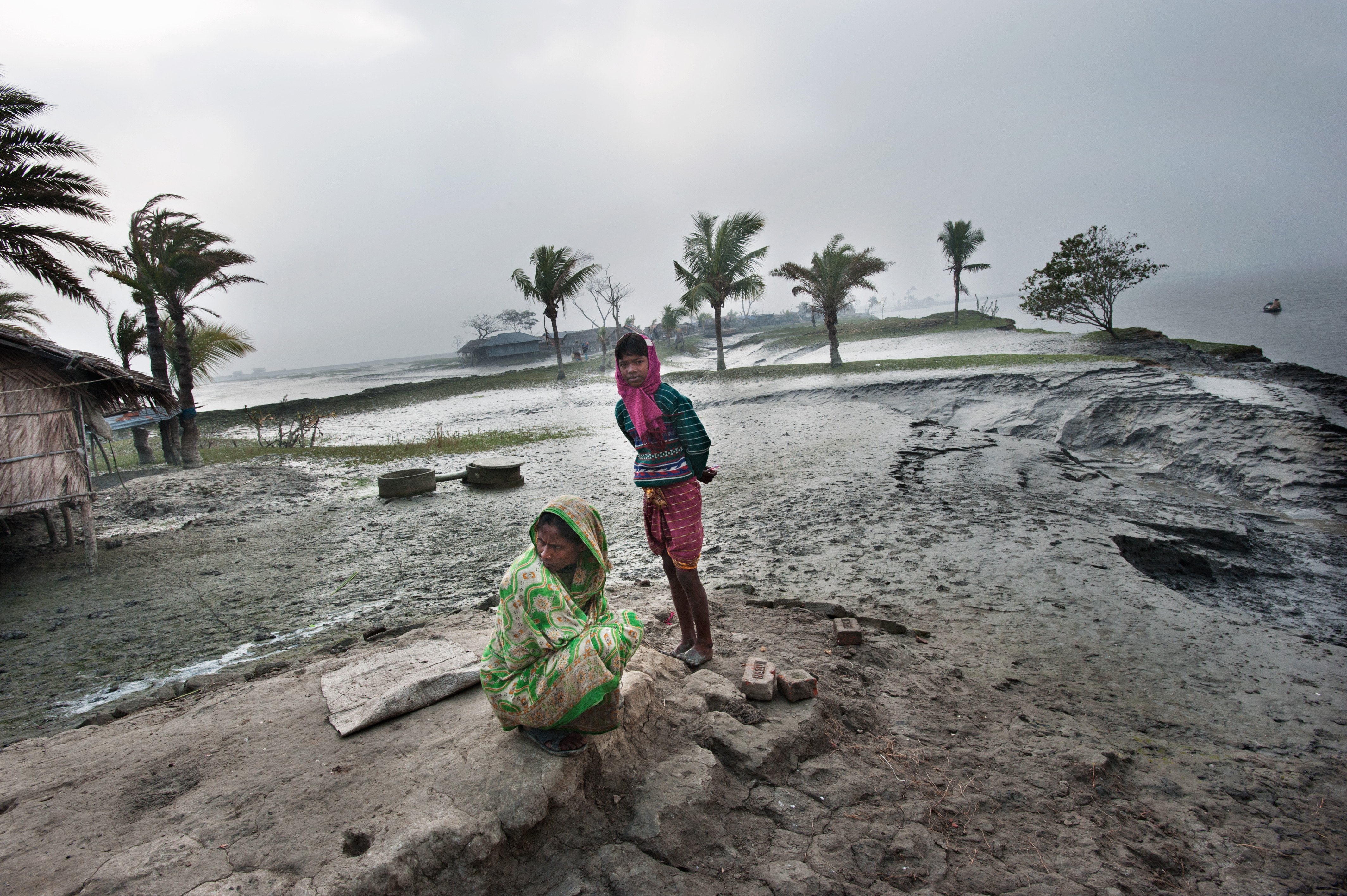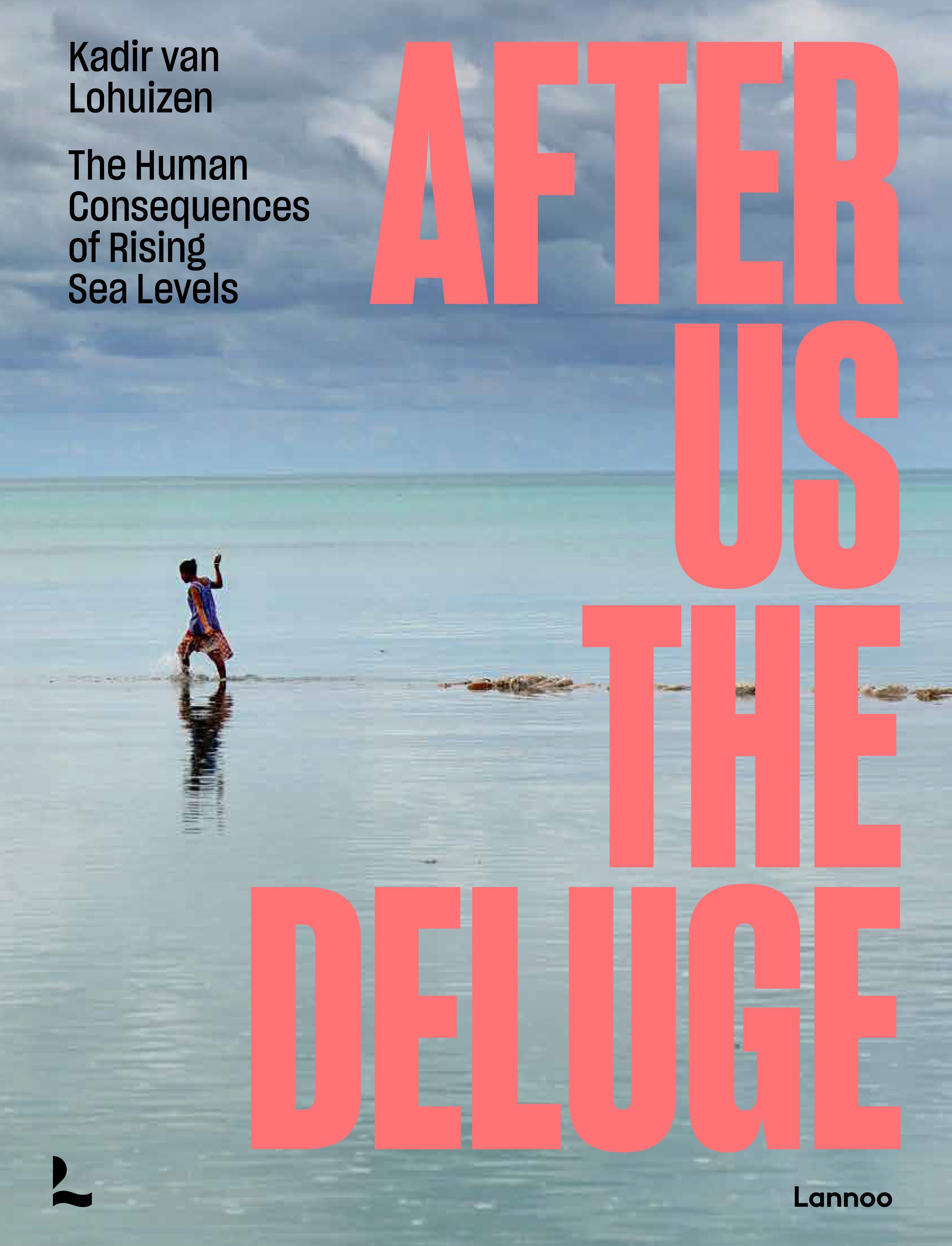In a city that’s built on porous limestone like Miami, a sea wall can only blunt storm surges. As the surrounding sea rises, water just seeps through the limestone foundation and percolates to the surface.
Rising sea levels have already increased flooding in the city. By the end of the decade, whole sections may be unlivable and, by 2100, nearly 1 million residents could be permanently displaced.
Miami was one of several cities that the photojournalist Kadir van Lohuizen visited over the past decade while documenting the human consequences of sea level rise. For his new photobook, After Us The Deluge, van Lohuizen enlisted scientists, politicians, and journalists to tell the stories of this impact alongside his stunning photographs. An exhibition on the book will be on view in the Museum of the City of New York through 2022.
Globally, sea levels are rising by an eighth of an inch each year, and the pace is increasing as glacial melting accelerates and the ocean warms. By the end of the century, hundreds of millions of people could lose their homes, farms, and ways of life to the ocean.
Van Lohuizen’s book features scenes from Greenland, Panama, Indonesia, the US, Bangladesh, the Netherlands, the UK, and the Pacific.
In Greenland, melting glaciers and warming temperatures have meant farmers can grow strawberries, but sandbags now need to be stacked up to keep homes from being inundated by floods.
The government of Indonesia is planning to relocate the capital city Jakarta to the north because the land it's sitting on is sinking as the ocean rises.

Parts of Kiribati are no more than 1.5 meters above sea level, meaning the Pacific Island could soon be submerged. In recent years, leaders from Pacific Island nations have banded together to demand bold climate action.
“People in the Pacific and Bangladesh are much more aware of the problem than people in the West are,” van Lohuizen said. “They know how to live with the water, and they know how to adapt.”

No matter where van Lohuizen traveled, the uneven impact of sea level rise was clear: People with the least access to resources faced the harshest consequences. Their homes were destroyed, their livelihoods disrupted, their futures made uncertain. This dynamic plays out in both the national and international contexts as lower-income countries are generally more susceptible than higher-income countries to climate shocks.
“The main issue is that countries that have very few emissions pay a very high price,” van Lohuizen said. “They are paying the price for how we have lived in the Western part of the world for many decades and that’s always a big debate at any climate summit — who is gonna pay for this? They say that it should be the polluter who pays the highest price.”
As the ocean encroaches on coastal areas, gradual flooding isn’t the only problem. Storms are also becoming more powerful. Van Lohuizen himself traveled to New Orleans in the aftermath of Hurricane Katrina and saw glimpses of the imminent climate crisis.
He said that he began digging into the issue of sea level rise in 2011, when most people still dismissed climate science. A decade later, world leaders have yet to fully appreciate the magnitude of the climate crisis.
“I consider the book to be visual evidence as well,” van Lohuizen said. “There’s still a lot of people who deny that it’s really happening. Hopefully, in history, it will be regarded as a document, because I think many of the places you see in the books will not exist in 50 to 100 years from now.”
He added: “How is it possible that we have all the knowledge, and knowledge for a long time, and governments are not willing to seriously look into the issue? How is it possible that we look at the climate crisis and say, ‘It’s maybe not going to be as bad as predicted,’ but over the years, all the scientific reports show that it’s getting worse than predicted?”
